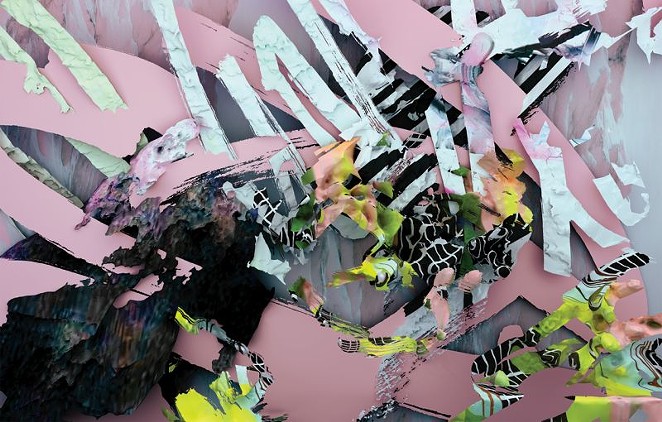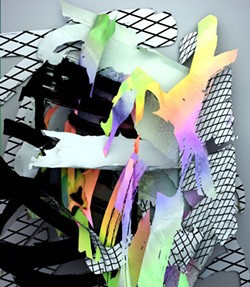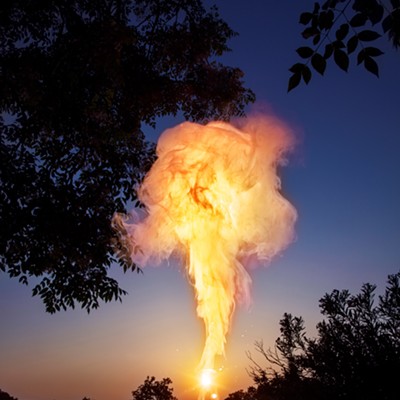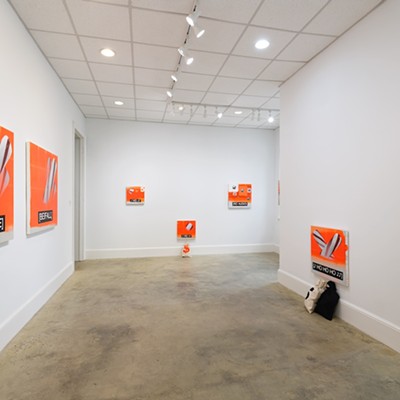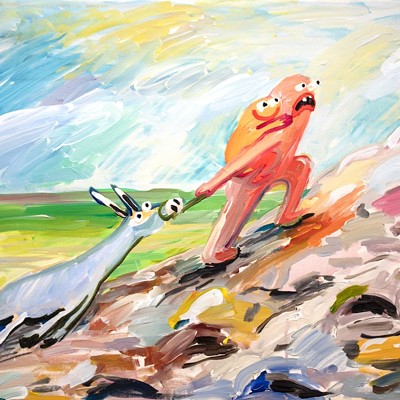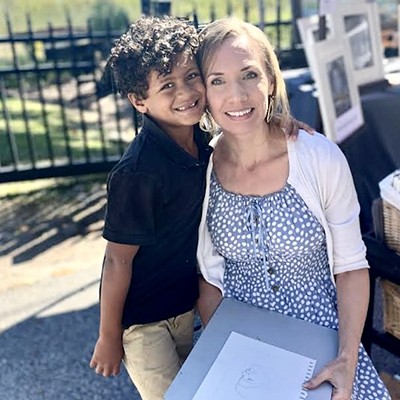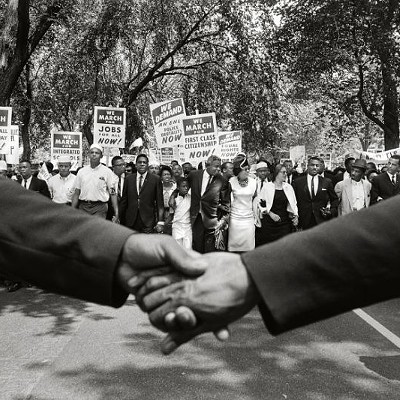WILL PENNY’S exhibition, "en plein air," at Laney Contemporary is more than just an exhibition—it’s an experience that demands time and attention. This is how Penny has always approached his work.
“I’m always thinking about trying to create different ways of a reward in actually seeing it in person,” explains Penny. “That’s the real experience. Even though so many of the tools I’m working with are very detached, there’s something about coming in and seeing it. I’ve never really seen photographs of art that have moved me quite in the way of seeing something powerful in person.”
Penny designed “en plein air” to fit the building perfectly, from the front foyer up through the hallway to the main gallery. The first piece, a projection on high-density foam board, is visually stimulating preview to what’s ahead. Many of the patterns in that first projection are repeated in different formats through the rest of the exhibition.
“I was trying to consider treating different areas of the gallery as different groups of work,” Penny explains. “Basically, the core of all this work made for this show starts with trying to negotiate all of these 3D scans taken in and around Savannah. I really wanted to have one space where we had light control and could do projections and animations. I thought it’d be interesting to have that here in this downstairs space with projection mapping.”
The foam board was carved with a CNC machine in Penny’s studio, and the projection maps the work onto all the board’s crevices.
“This composition is constructed in the same way that all the rendered prints upstairs were made,” shares Penny. “Each section has different footage. Some of it is stuff I’ve used in the past, some of it is newer content with these holographic designs, trying to pull all that together to create something that isn’t too, too crazy. I wanted it to be a moving image.”
One of the most fascinating parts of the first projection is the way the shadows work together.
“I was able to render simulated light on the relief, so you can see these fake shadows on different things,” says Penny, pointing to an area on the projection with a step-like surface. “This is one of my favorite areas because it works the best where you have the rendered lighting amplifying the dimensionality of it. That’s something I want to keep playing with, because not only can I carve it in 3D, but I can exaggerate how 3D it is in the rendering.”
The animations of the first projection are repeated in videos downstairs and then in gravity-defying sculptures upstairs. Six chunky objects spin on different axes in mid-air thanks to magnets.
“I was trying to translate an effect I’ve used in digital work and pull that into a real space,” Penny explains. “The push and pull between digital and virtual is an interesting area to play in. It made sensr to me to try and develop something that used that effect. The forms were born out of thinking about that. They were digitally sculpted. I wanted them to feel organic, lumpier, of-the-hand, more like clay even though they were made in a really complex way digitally.”
Laney put her full trust in Penny’s vision for the gallery.
“Many things were considered, like the mirrors that reflect the levitating piece so you not only get the original sculpture turning, but you get to see it twice,” says Laney. “The same kinds of marks that are in the sculpture reflect in the mirrored base underneath it and the paintings on the walls. It’s about those ideas and the repetition of those ideas, but also the different senses and different ways to experience those ideas.”
Penny uses a variety of nonconventional materials in the show to force the viewer to stop and really look at the work. At the top of the stairs, there’s a piece using holographic vinyl.
“I wanted to incorporate my older geometric works, and I tried for months to track down this type of holographic film,” he explains. “I wanted to capitalize on the light in this space, something that could use the light pouring in at different times of day and see the work change. I wasn’t sure if it was going to be a gimmicky kind of material, but I think because of the ability to have natural light, it made it something a lot more fun to interact with.”
At its essence, “en plein air” considers the play of light on form, just like the Impressionists did.
“I was thinking a lot about trying to bring nature into the work somehow, even if it was kind of subliminal and under the surface. The title borrows from that plein air painting, not just the act of going outside and bringing things in but by chasing after the sublime by going into nature,” explains Penny. “They weren’t actually making observational paintings; they were making these kind of pre-Photoshopped composites of ideal elements taken from nature. I like that idea of trying to heighten nature and make a hyper version of it, these beautiful amazing pictures that elicited that kind of sensation.”

